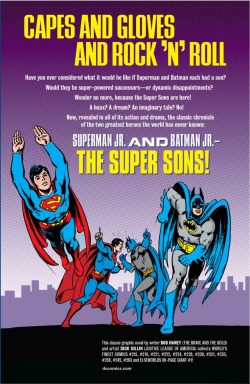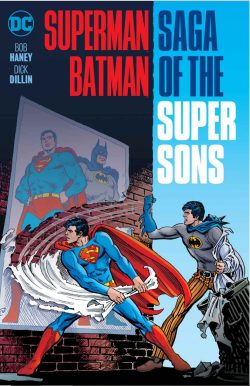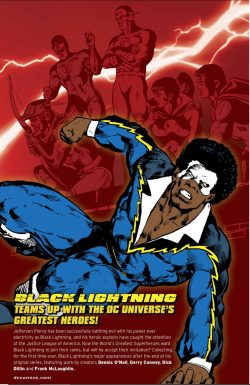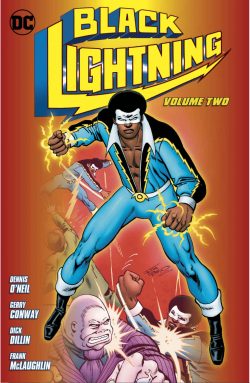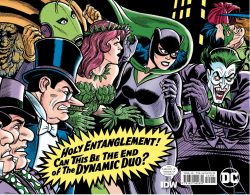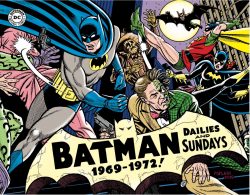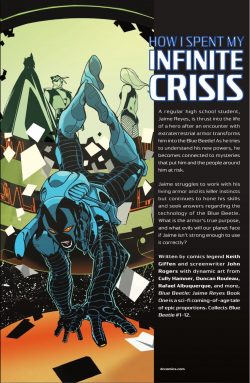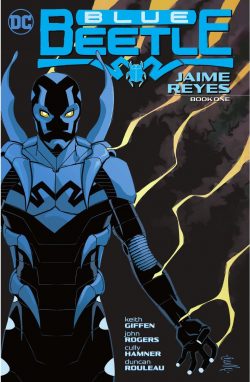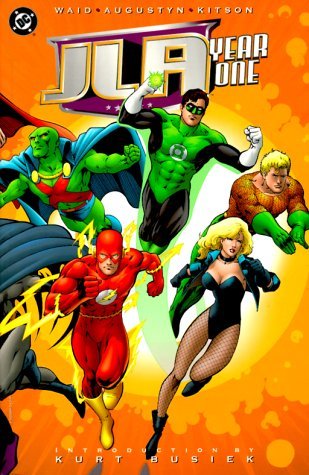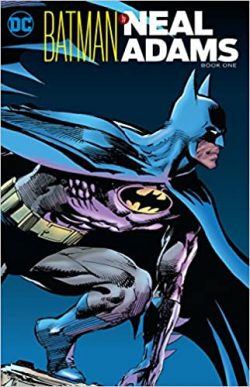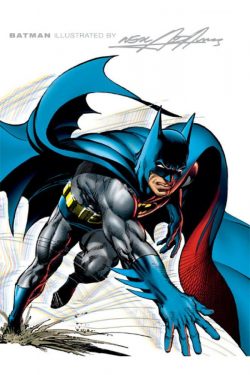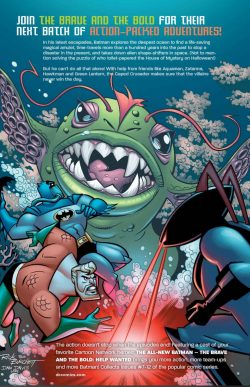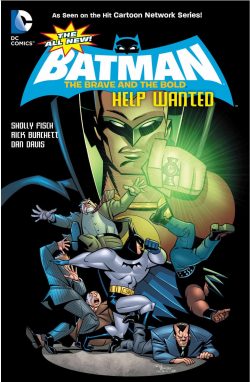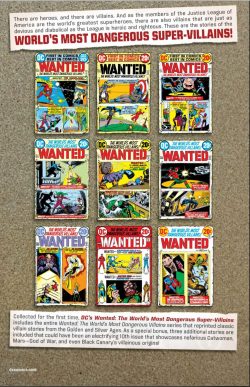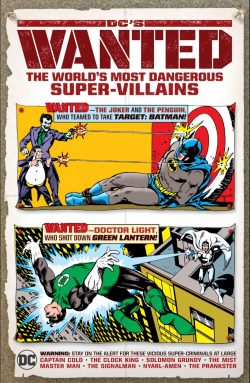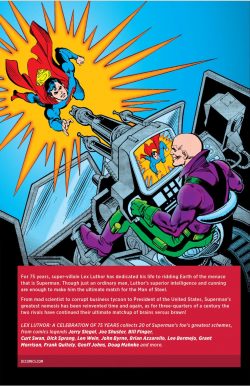
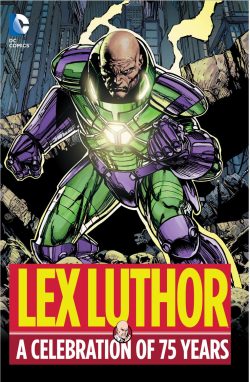
By Jerry Siegel & Joe Shuster, Bill Finger, Edmund Hamilton, Len Wein, Cary Bates, Elliot S. Maggin, John Byrne, Roger Stern, Grant Morrison, Greg Rucka, Brian Azzarello, Paul Cornell, Geoff Johns, John Sikela, Wayne Boring, Curt Swan, Jackson Guice, Howard Porter, Matthew Clark, Lee Bermejo, Frank Quitely, Pete Woods, Doug Mahnke & various (DC Comics)
ISBN: 978-1-4012-6207-5 (HB/Digital edition) 978-1- (TPB)
We’re all celebrating the anniversary of the ultimate superhero this year, but who’s thinking of his archenemy – the world’s first true supervillain? Time to address the balance, even if it’s actually two years until the mogul of menace is actually due his bit of candle-covered cake…
Closely paralleling the evolution of the groundbreaking Man of Steel, the exploits of the mercurial Lex Luthor are a vital aspect of comics’ very fabric. In whatever era you choose, the prototypical and ultimate mad scientist epitomises the eternal feud between Brains and Brawn and over eight decades has become the Metropolis Marvel’s true antithesis and nemesis. He’s also evolved into a social barometer and ideal perfect indicator of what different generations deem evil.
This stunning compilation – part of a dedicated series reintroducing and exploiting the comics pedigree of venerable DC icons – comes in Hardback, Trade Paperback and digital formats, sharing a sequence of snapshots detailing what Luthor is at key moments in his never-ending battle with Superman. Groundbreaking appearances are preceded by brief critical analyses of the significant stages in the villain’s development, beginning with Part I: 1940-1969 The Making of a Mastermind.
After history and deconstruction comes sinister adventure as the grim genius debuts in ‘Europe at War Part 2’ (Action Comics #23 April 1940 by Jerry Siegel & Joe Shuster). Although not included here, Action #22 had loudly declared ‘Europe at War’ – a tense, thinly-disguised call to arms for the still-neutral USA, and as the Man of Tomorrow sought to stem the bloodshed, the saga became a continued story (almost unheard of in the early days of funny-book publishing).
Spectacularly concluding in #23, Clark Kent’s European investigations revealed a red-headed fiend employing outlandish science to foment war for profit: intent on conquering the survivors as a modern-day Genghis Khan. The Man of Steel strenuously objected…
Next is ‘The Challenge of Luthor’ (Superman #4, Spring/March1940) and produced at almost the same time: a landmark clash with the rogue scientist who, back then, was still a roguish red-head with a bald and pudgy henchman.
Somehow in the heat of burgeoning deadlines, master got confused with servant in later adventures, and public perception of the villain irrevocably crystalized as the sinister slap-headed super-threat we know today. The fact that Superman was also a star of newspapers – which operated under a different inworld continuity – is widely considered the root cause of that confusion…
Siegel & Shuster’s story involves an earthquake machine and ends with Luthor exhausting his entire arsenal of death-dealing devices attempting to destroy his enemy… with negligible effect.
From Superman #17 (July 1942), ‘When Titans Clash’, by Siegel & John Sikela, depicts how the burly bald bandit uses a mystic “powerstone” to survive his justly earned execution by stealing Superman’s abilities. However, the Action Ace retains his wily intellect and outsmarts his titanically-empowered foe…
Jumping ahead 10 years, ‘Superman’s Super Hold-Up’ (by Bill Finger, Wayne Boring & Stan Kaye from World’s Finest Comics #59 July 1952) is a supremely typical duel of wits in which the Einstein of Evil renders the Metropolis Marvel helpless with the application of a devilish height- and pressure-sensitive mega explosive device… if only for a little while…
WFC #88 (June 1957 by Edmond Hamilton, Dick Sprang & Kaye) offers ‘Superman and Batman’s Greatest Foes!’ wherein “reformed” master criminals Lex and The Joker ostensibly set up in the commercial robot business. Nobody really believes them… as it happens, quite correctly!
As the mythology grew and Luthor became a crucial component of Superman’s story, the bad boy was retroactively inserted into the hero’s childhood. ‘How Luthor Met Superboy!’ (Siegel & Al Plastino in Adventure Comics #271, April 1960) details how Boy of Steel and budding genius were pals until a lab accident burned off Lex’s hair. In his prideful fury Lex blamed the Kryptonian and swore revenge…
In Finger, Curt Swan & John Forte’s ‘The Conquest of Superman’ (Action Comics #277, June 1961) the authorities parole Lex to help with an imminent crisis, only to have the double-dealer escape as soon as the problem is fixed. By the time Superman returns to Earth, Luthor is ready for him…
For October 1963, Superman #164 featured ‘The Showdown between Luthor and Superman’ (Hamilton, Swan & George Klein). The ultimate Silver Age confrontation between the Caped Kryptonian and ultimate antithesis pitted them in an unforgettable clash on devastated planet Lexor – a lost world of forgotten science and fantastic beasts – resulting in ‘The Super-Duel!’ and displayed a whole new side to the often two-dimensional arch-enemy.
Part II: 1970-1986 Luthor Unleashed previews how a more sophisticated readership demanded greater depth in their reading matter and how creators responded by adding a human dimension to the avaricious mad scientist. ‘The Man Who Murdered the Earth’ from Superman #248 (cover-dated February 1972, by Len Wein, Swan & Murphy Anderson). Here Luthor dictates his final testament after creating a Galactic Golem to destroy his sworn enemy, and ponders how his obsession caused the demise of humanity.
For Action Comics’ 45th anniversary, Superman’s two greatest foes – the other being Brainiac – were radically re-imagined for an increasingly harder, harsher world. ‘Luthor Unleashed’ in #544 (June 1983, by Cary Bates, Swan & Anderson) saw the eternal enmity between Lex and Superman lead to Lexor’s destruction and death of Luthor’s new family after the techno-terror once more chose vengeance over love.
Crushed by guilt and hatred, the maniacal genius reinvents himself as an implacable human engine of terror and destruction…
Elliot S. Maggin, Swan & Al Williamson offer a glimpse into the other motivating force in Luthor’s life, exposing ‘The Einstein Connection’ (Superman #416, February 1986) wherein a trawl through the outlaw’s life reveals a hidden link to the greatest physicist in history…
The Silver Age of comic books utterly revolutionised a flagging medium, bringing a modicum of sophistication to the returning sub-genre of masked mystery men. However, after decades of cosy wonderment, Crisis on Infinite Earths transformed the entire DC Universe, leading to a harder, tougher Superman. John Byrne’s radical re-imagining was most potently manifested in Luthor, who morphed from brilliant, obsessed bandit to ruthless billionaire capitalist as seen in the introduction to Part III: 1986-2000 Captain of Industry…
The tensions erupt in ‘The Secret Revealed’ (Superman volume 2 #2, February 1987 by Byrne, Terry Austin & Keith Williams) as the pitiless tycoon kidnaps everyone Superman loves to learn his secret. After collating all the data obtained by torture and other means, the corporate colossus jumps to the most mistaken conclusion of his misbegotten life…
‘Metropolis – 900 Miles’ (Superman vol. 2 #9, September 1987 by Byrne & Karl Kesel) then explores the sordid cruelty of the oligarch who cruelly torments a pretty waitress with a loathsome offer and promise of a new life…
‘Talking Heads’ appeared in Action Comics #678 (June 1992, by Roger Stern, Jackson Guice & Ande Parks), set after Luthor – riddled with cancer from wearing a green Kryptonite ring to keep Superman at arms’ length – secretly returned to Metropolis as his own son in a cloned (young and handsome) body. Acting as a philanthropist and with Supergirl as his girlfriend/arm candy, young Luthor has everybody fooled, Sadly, everything looks like falling apart when rogue geneticist Dabney Donovan is arrested and threatens to tell an incredible secret he knows about the richest man in town…
‘Hostile Takeover’ comes from JLA #11 1997) wherein Grant Morrison, Howard Porter & John Dell opened interstellar saga ‘Rock of Ages’ with the Justice League facing a newly-assembled, corporately-inspired Injustice Gang organised by Lex and run on his ruthlessly efficient business model.
Superman, Batman, Wonder Woman, Martian Manhunter, Flash, Green Lantern and Aquaman are targeted by a coalition of arch-enemies comprising Chairman-of-the-Board Lex, Joker, Circe, Mirror Master, Ocean Master and Doctor Light, with ghastly doppelgangers of the World’s Greatest Heroes raining destruction down all over the globe.
Even with new members Aztek and second-generation Green Arrow Connor Hawke on board, the enemy are running the heroes ragged, but the stakes change radically when telepath J’onn J’onzz detects an extinction-level entity heading to Earth from deep space…
The action and tension intensify when the cabal press their advantage whilst New God Metron materialises, warning the JLA that the end of everything is approaching.
As ever, these snippets of a greater saga are more frustrating than fulfilling, so be prepared to hunt down the complete saga. You won’t regret it…
A true Teflon businessman, Lex met the millennium running for President and Part IV: 2000-Present 21st Century Man follows a prose appraisal with ‘The Why’ from President Luthor Secret Files and Origins #1 (2000, by Greg Rucka, Matthew Clark & Ray Snyder). Here the blueprint to power and road to the White House is deconstructed, with daily frustrations and provocations revealing what inspired the nefarious oligarch to throw his hat into the truly evil political ring…
The next (frustratingly incomplete) snippet comes from a miniseries where the antagonist was the star. ‘Lex Luthor Man of Steel Part 3’ by Brian Azzarello & Lee Bermejo offers a dark and brooding look into the heart and soul of Superman’s ultimate eternal foe: adding gravitas to villainy by explaining Lex’s actions in terms of his belief that the heroic Kryptonian is a real and permanent danger to the spirit of humanity.
Luthor – still believed by the world at large to be nothing more than a sharp and philanthropic industrial mogul – allows us a peek into his psyche: viewing the business and social (not to say criminal) machinations undertaken to get a monolithic skyscraper built in Metropolis. The necessary depths sunk to whilst achieving his ambition, and manipulating Superman into clashing with Batman, are powerful metaphors, but the semi-philosophical mutterings – so reminiscent of Ayn Rand’s The Fountainhead – although flavoursome, don’t really add anything to Luthor’s character and even serve to dilute much of the pure evil force of his character.
Flawed characters truly make more believable reading, especially in today’s cynical and sophisticated world, but such renovations shouldn’t be undertaken at the expense of the character’s heart. At the end Luthor is again defeated; diminished without travail and nothing has been risked, won or lost. The order restored is of an unsatisfactory and unstable kind, and our look into the villain’s soul has made him smaller, not more understandable.
Lee Bermejo’s art, however, is astoundingly lovely and fans of drawing should consider buying this simply to stare in wonder at the pages of beauty and power that he’s produced here. Or read the entire story in its own collected edition…
Rather more comprehensive and satisfying is ‘The Gospel According to Lex Luthor’ as first seen in All-Star Superman #5. Crafted by Morrison, Frank Quitely & Jamie Grant from September 2006, here an unrepentant Luthor on Death Row grants Clark Kent the interview of his career and scoop of a lifetime, after which ‘The Black Ring Part 5’ (Action Comics #894, December 2010 by Paul Cornell & Pete Woods) confirms his personal world view as Death of the Endless stops the universe just so she can have a little chat with Lex and see what he’s really like…
This epic trawl through the villain’s career concludes with a startling tale from Justice League volume 2, #31 (August 2014) as, post-Flashpoint, a radically-rebooted New 52 DCU again remade Lex into a villain for the latest generation: brilliant, super-rich, conflicted and hungry for public acclaim and approval. In ‘Injustice League Part 2: Power Players’ by Geoff Johns, Doug Mahnke, Keith Champagne & Christian Alamy, bad-guy Luthor has helped Earth from extradimensional invaders and now wants to be a hero. His solution? Make real superheroes invite him into the Justice League, which can be accomplished by ferreting out Batman’s secret identity and blackmailing the Dark Knight into championing his admission…
Lex Luthor is the most recognizable villain in comics and can justifiably claim that title in whatever era you choose to concentrate on; goggle-eyed Golden Age, sanitised Silver Age or malignant modern/Post-Modern milieux. This book captures just a fraction of all those superb stories and offers a delicious peek into the dark, unhealthy side of rivalry and competition…
This monolithic testament to the inestimable value of a good bad-guy is a true delight for fans of all ages and vintage.
© 1940, 1942, 1952, 1954, 1957, 1960, 1961, 1963, 1972, 1983, 1986, 1987, 1992, 1997, 2001, 2005, 2006, 2007, 2010, 2014, 2015 DC Comics. All Rights Reserved

